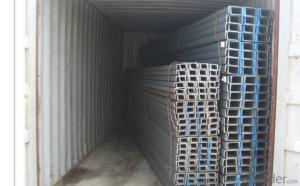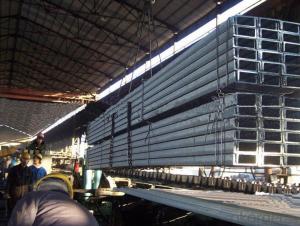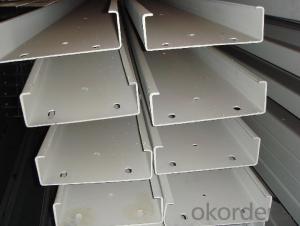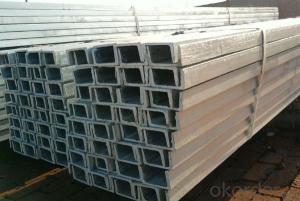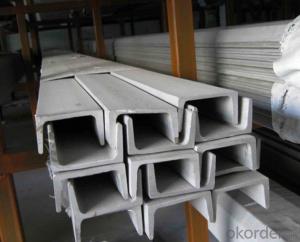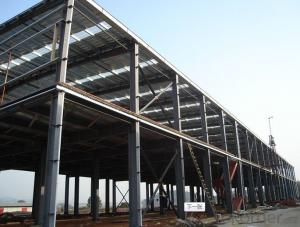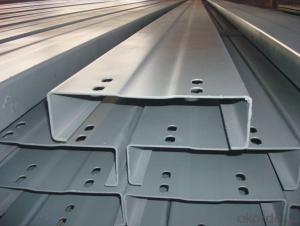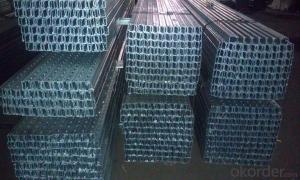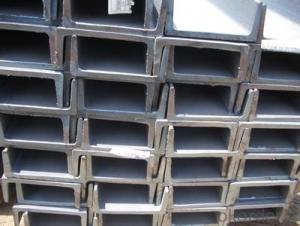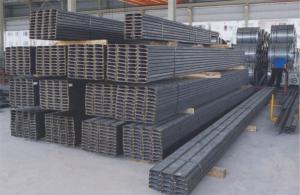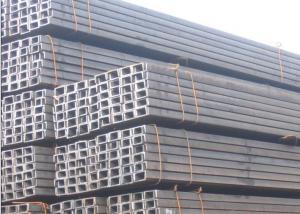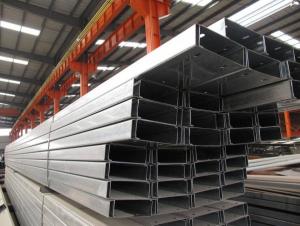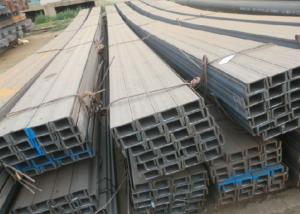C Channel Steel with UL Certification CNBM Golden Supplier
- Loading Port:
- Qingdao
- Payment Terms:
- TT OR LC
- Min Order Qty:
- 2000 PCS
- Supply Capability:
- 40000 PCS/month
OKorder Service Pledge
OKorder Financial Service
You Might Also Like
CNBM Golden Supplier C Channel Steelwith UL Certification Details
Standard: | AISI,ASTM,BS,DIN,GB,JIS | Dimensions: | 41*21 41*41 | Grade: | GALVANIZED STEEL |
Place of Origin: | Jiangsu China (Mainland) | Brand Name: | CNBM | Model Number: | Male |
Shape: | C Channel | Application: | hanging system | Perforated Or Not: | Is Perforated |
Thickness: | 1.5mm-2.6mm | Surface treatment: | Pre or hot-dip galvanized | Name: | galvanized steel c channel with UL certification |
Title: | c channel with UL certification | Keyword: | c channel | Groove processing: | slotted or plain |
Packaging & Delivery
Packaging Detail: | Plastic film packing in bundles |
Delivery Detail: | usually 15-25 days can be shorten by your requirement |
CNBM Golden Supplier C Channel Steelwith UL Certification Specification
Commodity | 41*41, 41*21 (1-5/8"*1-5/8", 1-5/8"*13/16") and other sizes customized steel profile |
Thickness | 1.5mm-2.6mm |
Length | 3m or to your requirement |
Material | Q195 Steel |
Surface treatment | slotted/plain |
Powder coated | |
pre-Galvanized or hot-dip galvanized | |
Quality authentication | ISO 9001:2000 |
Usage | railway,post, steel structure,construction etc. |
Warehouse/ factory wall/ makeshift house | |
Shape | C section shape |
According to your details | |
CNBM Golden Supplier C Channel Steelwith UL Certification Advantage
1.Flexible payment way
Good financial chain ensure TT, L/C, D/P payment ways.
2.Timely and stalble delivery
Stable production line and advanced managerment system enable the timely and stable delivery.
3.Reliable quality
Advanced technology and more than 10 years working experience make our quality superior.
CNBM Golden Supplier C Channel Steelwith UL Certification Pictures

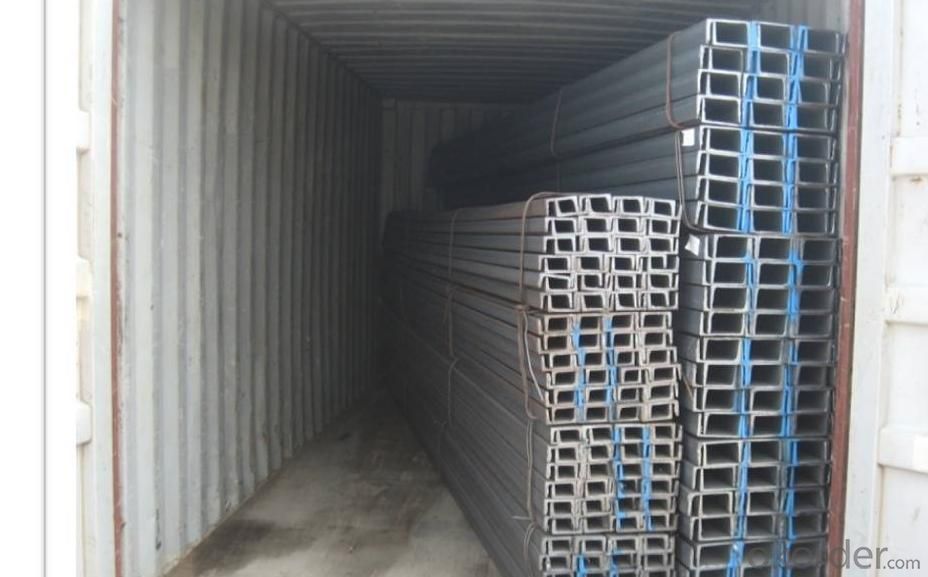
- Q: How are steel channels joined together?
- Steel channels are typically joined together using welding techniques such as arc welding or MIG welding. These methods involve melting the ends of the channels and fusing them together to create a strong and durable connection. Other methods such as bolting or riveting may also be used depending on the specific application and structural requirements.
- Q: Can steel channels be used in telecommunications infrastructure?
- Certainly, telecommunications infrastructure can make use of steel channels. One can commonly find steel channels being employed in the construction of electrical and telecommunications towers, as well as during the installation of various equipment like antennas, cables, and support structures. The inherent strength and durability of steel render it a perfect material for supporting heavy equipment and guaranteeing the stability and longevity of telecommunications infrastructure. Moreover, steel channels can be conveniently customized and fabricated to suit specific requirements, thereby enabling efficient installation and maintenance procedures.
- Q: How do steel channels perform in seismic zones?
- Steel channels perform well in seismic zones due to their inherent strength and flexibility. The channels are able to absorb and distribute seismic forces, reducing the risk of structural failure during earthquakes. Additionally, steel channels can be designed and reinforced to meet the specific requirements of seismic zones, making them a reliable choice for construction in such areas.
- Q: Are steel channels suitable for railway infrastructure?
- Yes, steel channels are suitable for railway infrastructure. They provide excellent strength and durability, making them ideal for supporting heavy loads and withstanding the wear and tear of train operations. Steel channels also offer flexibility in design and can be easily fabricated to meet specific railway requirements. Additionally, steel's resistance to corrosion and its low maintenance needs make it a cost-effective choice for long-term railway infrastructure projects.
- Q: Are steel channels suitable for use in the construction of machinery frames?
- Yes, steel channels are commonly used in the construction of machinery frames due to their strength, durability, and versatility. Steel channels provide excellent structural support and can withstand heavy loads, making them suitable for supporting the weight and various components of machinery. Additionally, steel channels offer flexibility in design, allowing for customization to meet specific requirements of the machinery frame. They are also resistant to corrosion and can withstand harsh environmental conditions, ensuring long-term functionality and reliability. Overall, steel channels are a reliable choice for constructing machinery frames, providing stability, strength, and longevity.
- Q: Are steel channels suitable for high-temperature manufacturing processes?
- Yes, steel channels are suitable for high-temperature manufacturing processes. Steel has excellent heat resistance properties, allowing it to withstand high temperatures without significant deformation or structural damage. Additionally, steel channels provide strength and stability needed in such processes, making them a suitable choice for high-temperature manufacturing applications.
- Q: How do steel channels perform in extreme weather conditions?
- Due to their strength and durability, steel channels are highly effective in extreme weather conditions. They are specifically designed to withstand forces such as high winds, heavy snow loads, and extreme temperatures. The structural integrity of steel channels allows them to resist bending, warping, or cracking, making them an ideal choice for enduring the impact of severe weather conditions. Moreover, steel channels exhibit remarkable resistance to corrosion, which is particularly important in areas with high humidity or exposure to saltwater. This resistance ensures that the steel channels remain robust and intact, even in harsh weather environments. Ultimately, steel channels offer a reliable and dependable option for construction projects in challenging weather conditions.
- Q: How are steel channels connected to other structural members?
- Steel channels can be connected to other structural members through various methods such as welding, bolting, or using mechanical connectors. This ensures a secure and stable connection between the steel channels and the other structural components, enabling them to function together as a unified system.
- Q: How do you mark the types of steel such as channel, I-beam and so on in the document?
- In the document mark "channel", "I-beam" and other steel symbols, the input method of small keyboard, right-click the Greek character mother.Section steel is a strip steel with definite section shape and size. It is one of the four big kinds of steel (plate, tube, mould, wire). According to the section shape, the section steel is divided into simple section steel and complex section steel (deformed steel). The former refers to the steel, round steel, flat steel, angle steel, six angle steel; the latter refers to the I-beam, channel steel, steel, steel, steel frame bending etc.
- Q: What are the different shapes of steel channels available?
- Some of the different shapes of steel channels available include C channels, U channels, and MC channels.
Send your message to us
C Channel Steel with UL Certification CNBM Golden Supplier
- Loading Port:
- Qingdao
- Payment Terms:
- TT OR LC
- Min Order Qty:
- 2000 PCS
- Supply Capability:
- 40000 PCS/month
OKorder Service Pledge
OKorder Financial Service
Similar products
Hot products
Hot Searches
Related keywords
